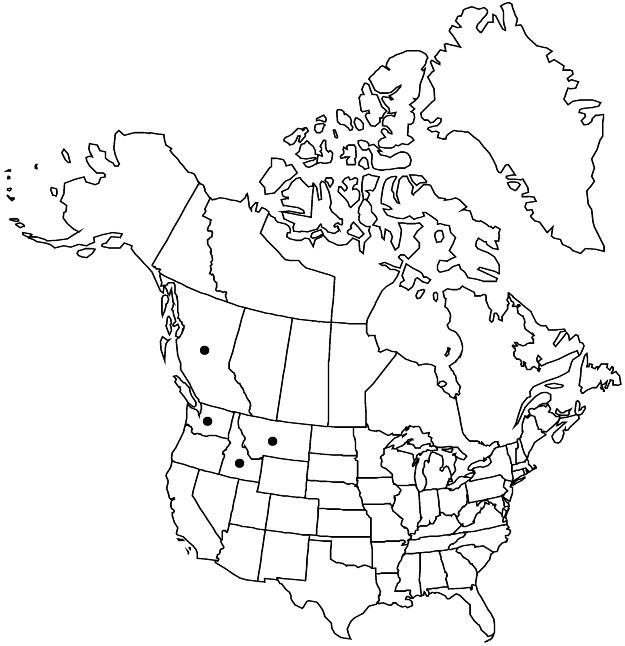Crataegus okennonii
Sida 18: 170, figs. 2, 4a–c, f. 1998.
Shrubs or trees, 30–100 (–140) dm. Stems usually single-trunked; 1-year old twigs deep mahogany, shiny, older gray-brown; thorns on twigs single, slightly recurved, usually brown young, 2 cm. Leaves: (fall color plum to crimson or light crimson); petiole 1–2 cm, pubescence and glandularity not recorded; blade elliptic to broadly elliptic, sometimes ± narrowly ovate or rhombic, 4–6 cm, lobes 2 or 3 per side, lobe apex acute to ± obtuse, margins serrate, venation craspedodromous, veins 4 per side, apex subacute to obtuse, abaxial surface glabrous except on veins, adaxial finely appressed-pubescent. Inflorescences 12–20-flowered; branches glabrous, sometimes ± sparsely pubescent; bracteole margins stipitate-glandular. Flowers 15–20 mm diam.; hypanthium glabrous; sepals broadly triangular, 3 mm, margins obscurely glandular; stamens 10–12, anthers pale-pink; styles 3 or 4. Pomes red-burgundy to chestnut or reddish-brown (late Aug), deep purple to black at full maturity, ± ampulliform-orbicular, 8–10 mm diam., glabrous; sepal remnants reflexed, apex obtuse; pyrenes 3 or 4, sides ± eroded, sometimes plane. 2n = 68.
Phenology: Flowering May; fruiting Sep–Oct.
Habitat: Mesic thickets, natural hedgerows, scrub
Elevation: 300–700 m
Distribution

B.C., Idaho, Mont., Wash.
Discussion
Crataegus okennonii is common in southern interior British Columbia and the eastern half of northern Washington, extending to Idaho and northwestern Montana, usually along streams or other water sources.
Although Crataegus okennonii is treated as a microspecies of C. douglasii by T. A. Dickinson et al. (2008), the ease with which most specimens can be identified and its relatively wide range merits taxonomic recognition. The plants are often distinctively tall, usually with a straight trunk.
While Crataegus okennonii fits towards an extreme of C. douglasii on individual characters, for example, relatively short thorns, broad, shallowly incised leaves, and larger flowers, the ensemble is unique. Further, putatively later anthesis, crimson fall foliage, and the peculiar color of the subripe fruit, red, reddish brown, or deep tan, are unknown for C. douglasii.
Selected References
None.
Lower Taxa
"thin" is not a number."thick" is not a number."adnate" is not a number."dm" is not declared as a valid unit of measurement for this property.